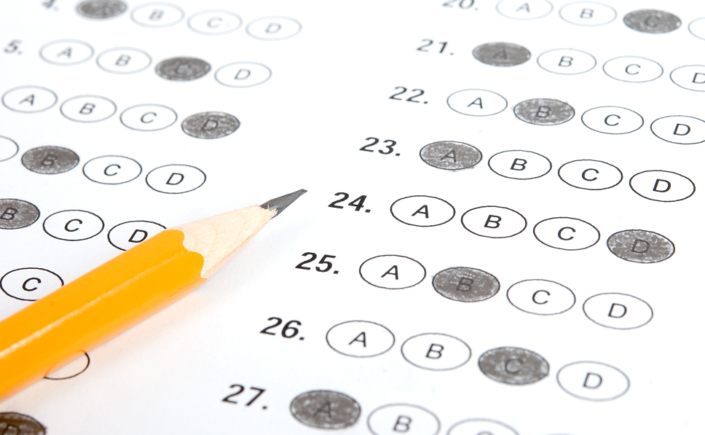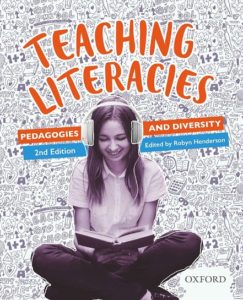By Emerita Professor Heather Fehring, School of Education, RMIT University
The assessment of literacy achievements is important to all levels of the educational community. From the individual student in the local school, to the Australian Government, the diverse range of literacy assessment expectations provides demanding challenges.
At the centre of the issue:
- Students ask: Am I on the right track?
- Parents ask: Is the school catering for my child’s needs?
- Principals, teachers and school councils ask: Is our school delivering curriculum to meet the needs of community expectations?
Secondarily:
- State Government Education Systems ask: How can system policy and procedure improve the educational opportunities for school communities?
At the third level:
- Australian Government departments ask: Is the Australian tax payer getting value for money?
To meet all these challenging demands requires a multitude of literacy assessment techniques and strategies.
Oxford University Press will release in 2019, a 2nd edition of Robyn Henderson’s edited collection called Teaching Literacies. Pedagogies and Diversity (Henderson, 2019). The book will contain a wealth of information related to the wide range of expectations about the teaching of literacy skills, and the different methods for assessing literacy achievement.
Catering for the wide range of audiences involved in delivering education across Australia, involves evaluating multiple sources of evidence-based data. By using large-scale testing programs such as NAPLAN (ACARA, 2018b) and PISA (OECD, 2016), Australia Government departmental personnel attempt to address questions such as, Is the Australian tax payer getting value for money? If not, why not? and How can the Australian Government departments, responsible for the wide range of delivery of services related to education, be more proactive in the delivery of high-quality education? To this end, policies have been constructed to improve Initial Teacher Education (ITE) students’ and graduates’ own literacy skills; to improve the quality of the teaching workforce.
At the individual school level, literacy assessment takes a more personal approach, related to the needs of students, parents, teachers, principals and the broader school community (Fehring, 2017). Designing curriculum to meet the literacy needs of students, while maintaining Australian state and territory educational policy and procedure, such as adherence to the Australian Curriculum (ACARA, 2016), is a more complex activity.
Establishing initial literacy benchmarks at the student level requires the utilization of a host of diverse assessment techniques or strategies. Teachers may choose to use not only different types of summative assessment measures, such as their NAPLAN results, or a Norm References test like the Tests of Reading Comprehension (TORCH) (ACER, 2013) or the PAT – R Progressive Reading Test – Reading (ACER, 2016), but also informal formative methods. These measures assist school staff to evaluate their literacy programs and target teaching to areas of perceived need.
The following list of assessment ideas is a subset of literacies assessment strategies and techniques (Fehring, 2019; Henderson, 2019, pp.76 & 77).
- Portfolio Assessment This involves the collection of diverse pieces of work (Forster & Masters, 1996a). Portfolios of students’ work may be domain specific, such as a writing folio containing draft, edited and finished samples of written pieces. Alternatively, portfolios may include multifaceted inquiry-based projects including assignments, and units of work (Forster & Masters, 1996b) which cover knowledge from several learning areas from the Australian Curriculum (ACARA, 2018a). Portfolios are very useful for showing individual students’ growth in their literacy achievement over time and to demonstrate to parents, the integration of literacy skills their child has mastered.
- Informal or Formative Assessment These are teacher-designed techniques (Wiliam, 2011). They are the strategies that teachers use every day to make ongoing and formative decisions about students’ learning. They are simple teaching and learning activities, designed specifically to assist students and teachers to understand what students have learned, how they have applied their literacy learning knowledge to a task and if there are any issues that indicate that an area covered in class needs to be revisited. Such strategies can include rubrics, cloze tasks, checklists (i.e., spelling, genre types, editing strategies), read and retell activities, text transformations tasks, learning and reading logs, running records, story maps, writers’ circles, literature circles, data charts, concept/mind maps, Know/Want to know/Learned (KWL) charts, writers’ literature circles, writers’ book and film reviews, Venn diagrams, Y charts, teacher questioning, observations (daily or incidental), anecdotal records, conferencing interviews (teacher/student, teacher/teacher, parent/teacher), surveys and questionnaires. This multitude of assessment strategy examples can be adapted by teachers for students from Foundation to Year 9 to meet the needs of assessing listening, speaking, reading, writing, viewing and critical and creative thinking.
- Product Assessment. These include models, dioramas, photographic exhibitions (Forster & Masters, 1998) multi-media presentations (PowerPoint, Blogs, web design) and videos. Such assessment strategies are designed to demonstrate students’ understanding of technology and the influence and power of multi-media in the 21st
- Self-Assessment, Peer Assessment and Group Assessment. Self-Assessment activities involve students making judgements about their own work. Such tasks often involve a student diary, journal or checklist, where students tick off if they have completed all the required components of the task. Peer assessment may involve students reading another classmate’s work to check whether the spelling, grammar and text type (genre) features are correct. Debates are a frequently used forms of peer assessment, where small groups of students judge each other’s performance related to verbally presenting an argument. Group assessment is often involved when students work as collaborative or cooperative peers to produce an inquiry-based project. The use of a rubric marking framework assessment tool, outlining the criteria and standards expected, can be designed by the whole class first. In this way a rubric is a teaching and learning tool and an assessment technique. Such assessment strategies not only encourage student engagement in their own learning, but also encourage critical and creative thinking in collaborative situations.
References
ACARA. (2016). Australian Curriculum. Version 8.3. Retrieved from http://www.australiancurriculum.edu.au/
ACARA. (2018a). Australian Curriculum. Retrieved from https://www.australiancurriculum.edu.au/f-10-curriculum/
ACARA. (2018b). National Assessment Program. Literacy and Numeracy 2017. National Report for 2017. Retrieved from http://www.nap.edu.au/docs/default-source/default-document-library/naplan-national-report-2017_final_04dec2017.pdf?sfvrsn=0
ACER. (2013). Tests of Reading Comprehension (TORCH). (3rd ed.). Camberwell, Victoria: ACER Press.
ACER. (2016). PAT-R Comprehension: Advanced. Camberwell, Australia: ACER Press.
Australian Government Department of Education and Training. (2015). Australian Government Response to the Teacher Education Ministerial Advisory Group (TEMAG) Report. Action Now: Classroom Ready Teachers. Retrieved from https://docs.education.gov.au/node/36789
Fehring, H. (2019). Literacies assessment: Theory and practice. In R. Henderson (Ed.), Teaching literacies. Pegagogies and diversity (2nd ed., pp. 70-98). Melbourne, Victoria: Oxford University Press.
Fehring, H. (Ed.) (2017). Assessment into practice. Understanding assessment practice to improve students’ literacy learning. Newtown, NSW: PETAA.
Forster, M., & Masters, G. N. (1996a). Assessment resource kit: Portfolios. Camberwell, Victoria: Australian Council for Educational Research.
Forster, M., & Masters, G. N. (1996b). Assessment resource kit: Projects. Camberwell, Victoria: Australian Council for Educational Research.
Forster, M., & Masters, G. N. (1998). Assessment resource kit: Products. Camberwell, Victoria: Australian Council for Educational Research.
Henderson, R. (Ed.) (2019). Teaching literacies. Pedagogies and diveresity (2nd ed.). Melbourne, Victoria: Oxford University Press.
OECD. (2016). PISA 2015. PISA results in focus. Retrieved from www.oecd.org/pisa
Wiliam, D. (2011). Embedded formative assessment. Bloomington, IN: Solution Tree Press.


Leave a Reply